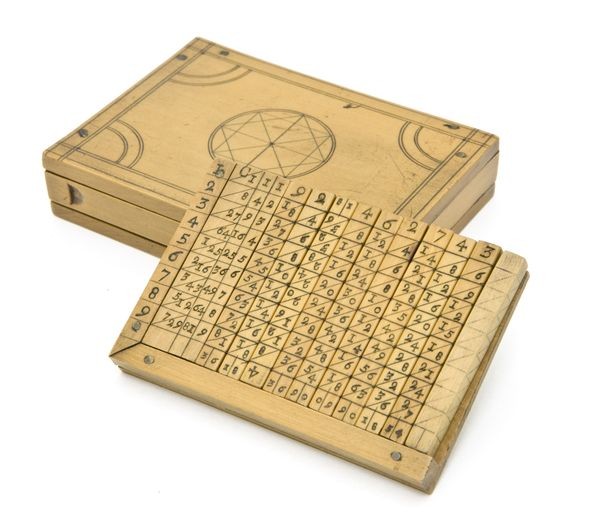Easy…and Accurate: Mechanical Calculators
Napier's Bones
This was a popular and portable calculation aid that reduced multiplication and division to a series of additions and subtractions. It used a table-based calculation method that probably originated in India in the Middle Ages.
Easy...and Accurate: Mechanical Calculators
For some calculations, the slide rule’s flexibility and simplicity outweighed its imprecision. But many tasks, such as accounting or taking inventory, demand the exact results that come from counting instead of measuring. Mechanical calculators do that.
Solutions ranged widely, from “Napier’s Bones” in 1617, which used a sequence of sticks for multiplication, to the extremely elegant Curta calculator of the 1940s.
Napier's Bones
The original idea for this multiplication aid probably came from the Middle East. Europeans learned it from John Napier’s Rabdologia in 1617.
Users arranged rows of “bones” (bars inscribed with number sequences), then added certain numbers on the bars to do multiplication.
John Napier of Merchiston, Scotland
Napier’s “bones” are a mechanical aid to multiplication and division. They embody an earlier calculation method from Islamic, South Asian, and Chinese mathematicians.
View Artifact Detail





